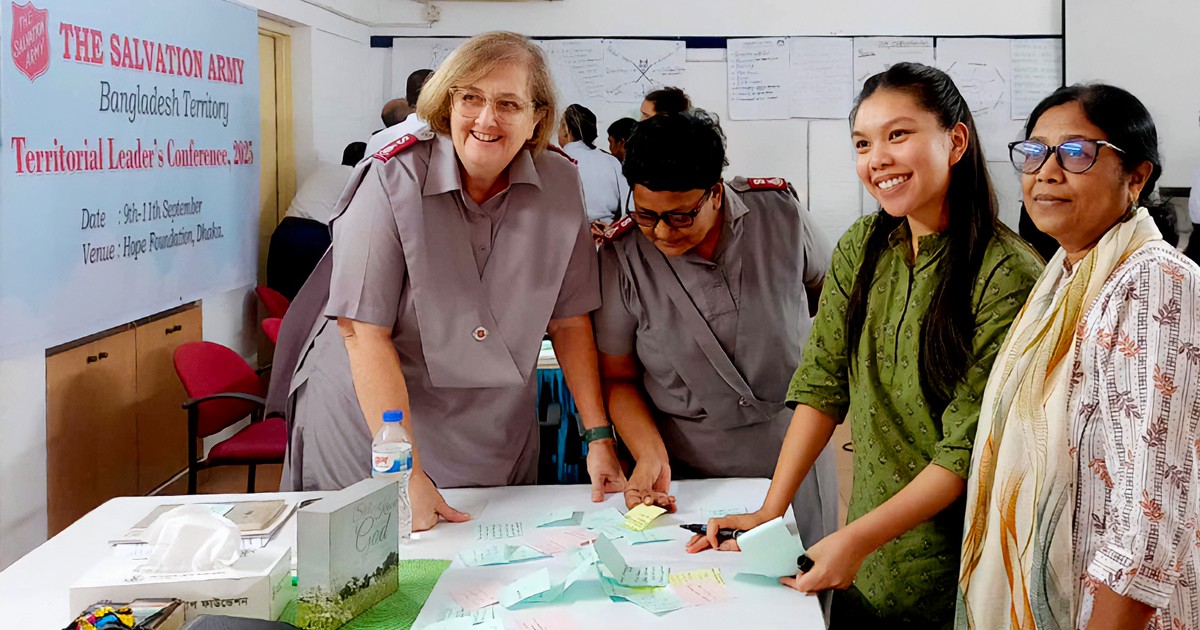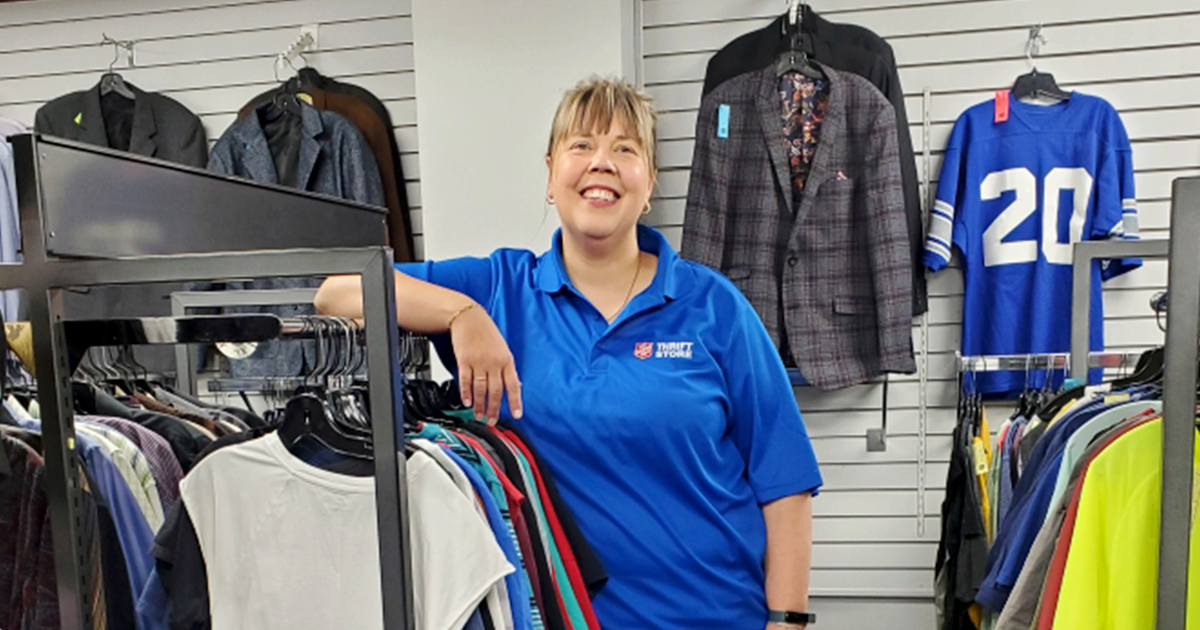A nondescript 1970s-era home in Saanich, B.C., holds six simple but tidy bedrooms, gardens, offices and a long dinner table.
For young men struggling with drug or alcohol addictions in Greater Victoria, it's a home away from home to regain control of their lives.
Living Like Family
“There are very few treatment centres for youth in B.C.,” says Salvation Army Major Kathie Chiu, executive director of The Salvation Army's addictions and rehabilitation centre in Victoria. “You've got to scour the province for a place to take them and have it not cost a fortune. This program was really needed here. Youth need a place to go.”
Up to six young men between 13 and 18 years old can stay at the house at any given time, typically for a month to three months. The centre is manned by 14 counsellors and residential staff members.
“It is a very home-like atmosphere,” says Sarah Jenkinson, a counsellor at Hope House. “It's important for youth in detox not to be institutionalized. This facility blends in well with the neighbourhood.”
Youth can find their way to Hope House through referrals from youth detention, probation officers and counsellors, but Major Kathie says all clients will leave the house with direction in their lives and a new support network.
“This is small, intimate and is an opportunity for young men to bond and rebuild relationships and get counselling,” she explains. “For many of these young men, their family atmosphere is not healthy. This gives them the opportunity to live like a family.
The staff become like parents, aunts and uncles.”
Healthy Choices
Turning around the lives of drug-addicted youths, who are of ten alienated from family, friends and school, requires a full-court press of services and planning. Keltie Manderville, Hope House co-ordinator, says it's about giving the youth structure, tempered with flexibility. Morning involves one-on-one and group counselling and then activities such as golf, basketball, swimming or hiking.
Staff members offer clients Japanese and Spanish lessons, and the house has frequent guests to engage the young people through music, writing, poetry and arts. Staff also teach life skills such as cooking, resumé building and job hunting.
“We try to draw out their passions, be it through arts, music, drawing or writing, and we build on that,” Keltie says. “Art is huge in the house, although not all youth like art. So it could be bookmaking or bookbinding, and we have gardening. It's about choices and making them feel as much a part of a real family as we can.”
Crucial Connections
Hope House started accepting clients in March after a long hunt for a new facility, when their former location was sold. An online classified ad company helped outfit the house with donated sports gear, TVs and a barbecue.
Keltie says they've taken the opportunity to revamp and expand Hope House programs to make broader connections with agencies throughout Greater Victoria and the province. For example, the young men can now continue high school through distance education.
A fundamental part of Hope House is establishing an individual care plan for each client—goals they want to achieve while in the centre and what they plan to do when they leave.
“It evolves from wanting to stay off drugs and wanting to build relationships with family members, to wanting to get back to school and back to friends, and wanting their life back,” Keltie states.
But it's the community connections that are crucial for life after Hope House. Ensuring the youth return to a safe home environment and to school or work is key to keeping them off the trajectory of using drugs or engaging in crime.
“Reintegrating the youth into the community is a big challenge,” Major Kathie says. “We can't do everything. We need to partner with community agencies.”
Victoria News, July 23, 2013
For young men struggling with drug or alcohol addictions in Greater Victoria, it's a home away from home to regain control of their lives.
Living Like Family
“There are very few treatment centres for youth in B.C.,” says Salvation Army Major Kathie Chiu, executive director of The Salvation Army's addictions and rehabilitation centre in Victoria. “You've got to scour the province for a place to take them and have it not cost a fortune. This program was really needed here. Youth need a place to go.”
Up to six young men between 13 and 18 years old can stay at the house at any given time, typically for a month to three months. The centre is manned by 14 counsellors and residential staff members.
“It is a very home-like atmosphere,” says Sarah Jenkinson, a counsellor at Hope House. “It's important for youth in detox not to be institutionalized. This facility blends in well with the neighbourhood.”
Youth can find their way to Hope House through referrals from youth detention, probation officers and counsellors, but Major Kathie says all clients will leave the house with direction in their lives and a new support network.
“This is small, intimate and is an opportunity for young men to bond and rebuild relationships and get counselling,” she explains. “For many of these young men, their family atmosphere is not healthy. This gives them the opportunity to live like a family.
The staff become like parents, aunts and uncles.”
Healthy Choices
Turning around the lives of drug-addicted youths, who are of ten alienated from family, friends and school, requires a full-court press of services and planning. Keltie Manderville, Hope House co-ordinator, says it's about giving the youth structure, tempered with flexibility. Morning involves one-on-one and group counselling and then activities such as golf, basketball, swimming or hiking.
Staff members offer clients Japanese and Spanish lessons, and the house has frequent guests to engage the young people through music, writing, poetry and arts. Staff also teach life skills such as cooking, resumé building and job hunting.
“We try to draw out their passions, be it through arts, music, drawing or writing, and we build on that,” Keltie says. “Art is huge in the house, although not all youth like art. So it could be bookmaking or bookbinding, and we have gardening. It's about choices and making them feel as much a part of a real family as we can.”
Crucial Connections
Hope House started accepting clients in March after a long hunt for a new facility, when their former location was sold. An online classified ad company helped outfit the house with donated sports gear, TVs and a barbecue.
Keltie says they've taken the opportunity to revamp and expand Hope House programs to make broader connections with agencies throughout Greater Victoria and the province. For example, the young men can now continue high school through distance education.
A fundamental part of Hope House is establishing an individual care plan for each client—goals they want to achieve while in the centre and what they plan to do when they leave.
“It evolves from wanting to stay off drugs and wanting to build relationships with family members, to wanting to get back to school and back to friends, and wanting their life back,” Keltie states.
But it's the community connections that are crucial for life after Hope House. Ensuring the youth return to a safe home environment and to school or work is key to keeping them off the trajectory of using drugs or engaging in crime.
“Reintegrating the youth into the community is a big challenge,” Major Kathie says. “We can't do everything. We need to partner with community agencies.”
Victoria News, July 23, 2013









Leave a Comment